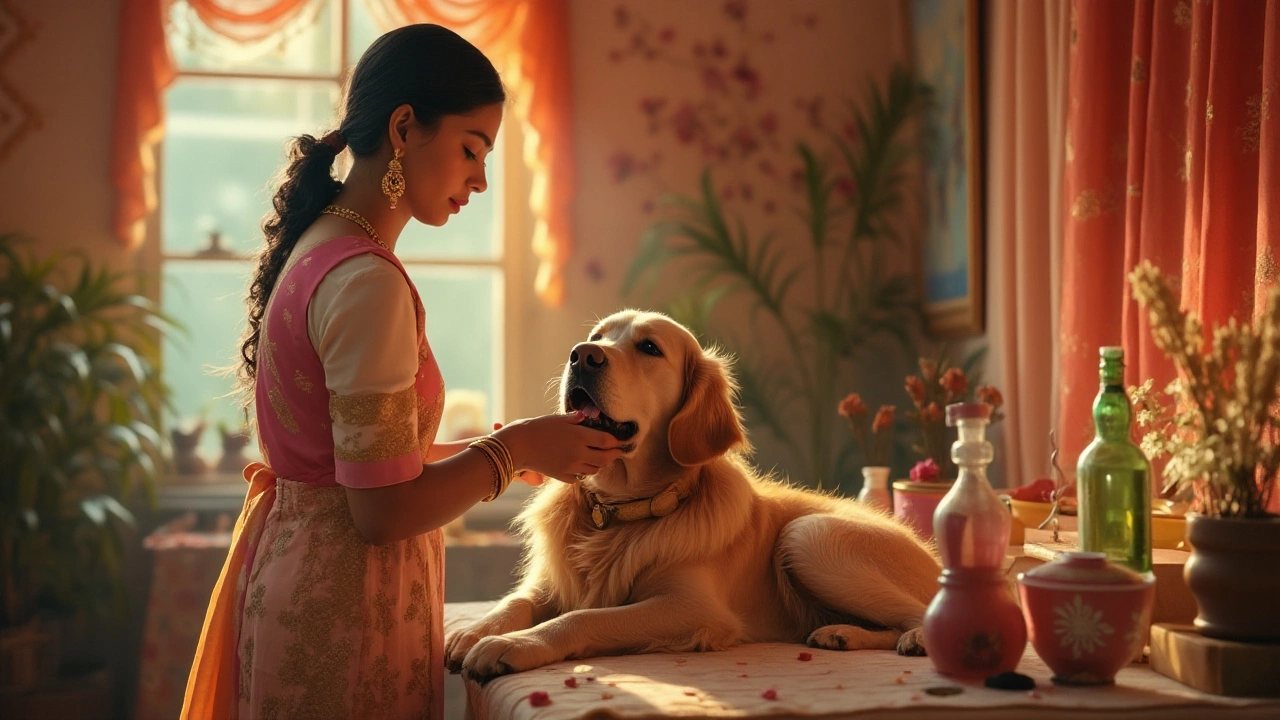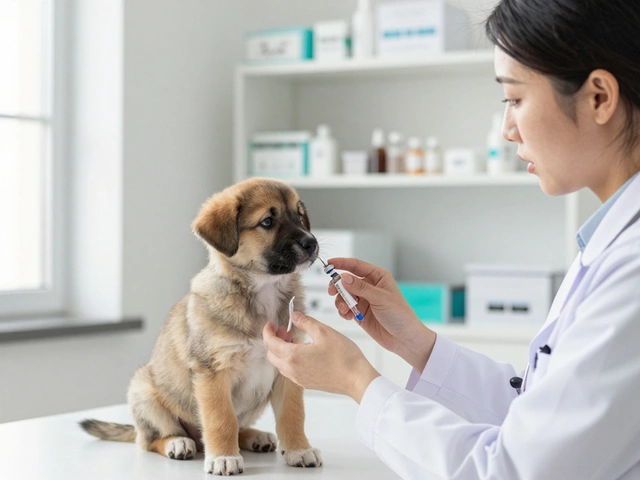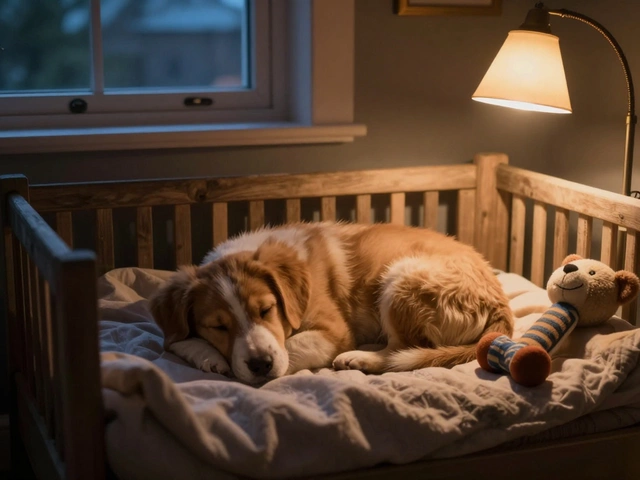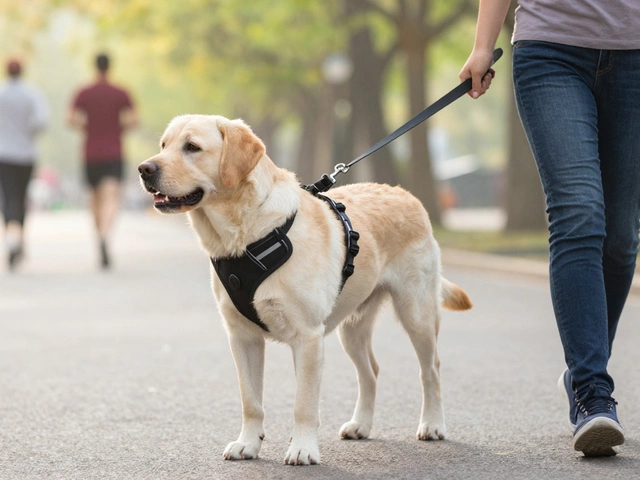
Grooming is an essential part of keeping our furry companions healthy and happy, yet for many dogs, the experience can be rather stressful. If you've ever pondered whether groomers use anything to calm dogs during their visits, you're not alone. Understanding the methods used by professionals can help ease your mind and provide peace for your pet.
This article takes a closer look at how groomers often manage dog anxiety. We're diving into different calming techniques, evaluating the safety of these methods, and offering practical tips to help your dog enjoy a smoother grooming experience. Let's uncover how a visit to the groomer can be a more pleasant journey for both you and your beloved dog.
- Understanding Dog Anxiety During Grooming
- Common Calming Techniques Used by Groomers
- Natural Remedies for Calming Dogs
- Safety and Concerns with Calming Aids
- Tips for Preparing Your Dog for a Grooming Session
- How to Choose the Right Groomer for Your Anxious Dog
Understanding Dog Anxiety During Grooming
Dogs, much like humans, have unique personalities and temperaments, and what might seem like just a routine trim for us can be an unnerving ordeal for them. The grooming salon, with its cacophony of strange noises, unfamiliar scents, and the sensation of being handled by an unknown person, can easily trigger anxiety in a dog. However, it is crucial to recognize that dog anxiety during grooming is a natural behavior, often stemming from fear, unfamiliarity, or past negative experiences. Dogs may exhibit their anxiety through various signs, such as trembling, excessive barking, hiding, or even aggressive behavior. Understanding these signs is the first step towards alleviating their discomfort.
For dogs who view grooming as an anxious affair, the root causes can vary. Puppies and young dogs may simply be sensitive to the new experience of being handled for grooming. In contrast, older dogs that have previously encountered distressing grooming experiences may harbor anxiety. The sound of clippers and dryers, the sensation of water sprays, and even an unfamiliar groomer's touch can all potentially act as triggers. Additionally, some breeds are naturally more high-strung and may require special attention. Acknowledging this diversity in canine responses is essential for grooming professionals and pet owners alike, to ensure a stress-free grooming routine.
"Dogs experience the world predominantly through their senses, especially smell and sound. When a groomer's studio is foreign and overwhelming, it's vital to approach their anxiety with patience and understanding." - Dr. Karen Jones, Canine Behavior Expert
Addressing dog anxiety during grooming requires a keen eye and a gentle approach. Some groomers are specially trained to identify the subtle cues of discomfort early in the grooming process, adapting their methods accordingly. By gently introducing dogs to the environment, possibly using treats as a pleasant distraction, they can significantly reduce the stress levels in an anxious dog. Having empathy for a dog's unique experience can transform a potentially anxiety-inducing situation into one of comfort and reassurance. And while not all dogs will instantly adapt, ongoing exposure combined with positive reinforcement can help even the most anxious dogs learn to tolerate, and even enjoy, their grooming appointments over time.
| Common Signs of Grooming Anxiety | Possible Solutions |
|---|---|
| Trembling or shaking | Provide calming treats or a quiet space |
| Excessive barking | Introduce dogs slowly to grooming equipment |
| Aggressive behavior | Seek professional groomer specialized in anxious dogs |
Common Calming Techniques Used by Groomers
When it comes to dog grooming, some pets can become overwhelmed by the unfamiliar environment, sounds, and activities. Professional groomers often employ a variety of calming techniques to ensure the experience is as stress-free as possible for dogs. Many groomers start by establishing a calm and soothing atmosphere in their grooming salons. This might include playing soft music, using lavender-scented diffusers, or keeping the lighting gentle and ambient. The idea is to create a spa-like environment that helps dogs relax as soon as they enter.
Groomers often begin the session by allowing the dog to get comfortable with the environment. This can involve gently petting the dog, offering treats, or letting them explore the space before starting any grooming procedures. Building trust is crucial; the dog needs to see the groomer as a friend rather than a threat. Some groomers even incorporate simple massage techniques to soothe their canine clients. By gently massaging key areas like the ears, back, and neck, they can help alleviate tension. Such strategies not only calm the dog but also create a positive association with grooming sessions.
There are also specific tools that many groomers use to help anxious dogs. Calming aids such as anxiety wraps, or ThunderShirts, are well-regarded for their ability to make dogs feel more secure. These garments apply gentle pressure akin to a comforting hug, which can significantly reduce anxiety levels. Another tool that might be employed is a pet-friendly sedative, always administered following a veterinarian's guidance. It's essential to consult with the pet owner and ensure that these methods align with a dog's specific needs and health conditions.
Natural Remedies for Calming Dogs
When it comes to calming our beloved pets, sometimes the simplest solutions are derived from nature itself. Many dog groomers have turned to natural remedies to ease anxiety in dogs, capitalizing on their soothing and harmless effects. One popular anecdotal remedy includes the use of herbal extracts like chamomile and valerian root, which have been shown to reduce stress and induce relaxation in canines. These herbs can often be found in sprays or as part of calming treats, designed specifically for dogs prone to anxiety during grooming sessions.
Aromatherapy is another fascinating method that professional groomers may use. Essential oils such as lavender and chamomile are known for their calming properties in humans, and research suggests they can have similar effects on dogs. By diffusing these oils in the grooming area, the environment becomes more tranquil, potentially putting anxious canines at ease. These aromas can also be integrated into special shampoos or conditioners, providing a calming bath experience.
"The natural world offers a wide spectrum of calming avenues that are both effective and safe when used correctly for our pets." — Pet Wellness Expert
Moreover, supplements such as L-Theanine and B-vitamins, often found in some specialty dog foods or supplements, are known to support relaxation without sedation. These nutrients work with a dog’s brain chemistry to instill a sense of calm without the use of pharmaceuticals. Approaches like this are particularly beneficial for pet owners seeking more holistic solutions.
While natural remedies can be quite effective, it’s crucial for dog owners to consult with their vet before introducing new supplements or herbs into their pet’s routine. This ensures safety and appropriateness based on the dog's health status and any existing medical conditions. Involving your veterinarian in the decision-making process is always a wise route to avoid unintended side effects, ensuring that your furry friend's grooming session becomes an event to look forward to rather than dread.

Safety and Concerns with Calming Aids
When it comes to using calming aids for dogs during grooming, understanding the safety and potential concerns is paramount. These aids, ranging from herbal remedies to over-the-counter supplements, aim to reduce anxiety and make the grooming experience more pleasant for your dog. However, like all things related to your pet's health, weighty considerations must be made before opting for these solutions. Dogs, much like humans, react differently to various calming products, and what works for one might not necessarily work for another, highlighting the necessity for a tailored approach.
A substantial segment of these calming aids includes natural remedies, which are favored by some pet owners who prefer a holistic approach. Chamomile, valerian root, and even ginger are frequently used because of their supposed calming properties. Yet, the efficacy and safety of these natural supplements haven't been uniformly established. Unlike prescription medications, these products are not subject to the same rigorous testing, leading to variability in results. A survey by the American Veterinary Medical Association documented pet owners reporting mixed results with natural calming aids, underscoring the importance of consulting with a veterinarian before administration.
Beyond natural remedies, groomers sometimes recommend or employ products such as calming sprays or diffusers that release pheromones. These pheromones mimic those that a mother dog would produce, creating an environment that feels safe and nurturing for the anxious pet. The voluntary action of using these products reflects the growing trend among groomers to incorporate stress-reducing techniques within their services. However, it should be noted that not all dogs respond positively to pheromones, making it essential for owners to monitor their dog's reaction carefully during the first few uses.
"The safety of calming aids should be a significant consideration, not a mere afterthought," notes Dr. Sheila Moore, a prominent veterinarian and animal behaviorist. "Engaging with a professional who understands the underlying anxieties in dogs is crucial when selecting the appropriate solution."
Prescription medications, such as sedatives, are another option, though typically considered a last resort due to potential side effects. These medications can indeed provide solace to highly anxious dogs, yet must be prescribed and closely monitored by a veterinary professional to ensure they do not interfere with underlying health conditions. Some pets may display adverse reactions, making it indispensable to have an in-depth discussion with a veterinarian to gauge risk versus benefit.
For those contemplating these aids, a balanced dialogue between pet owner and groomer is vital. Sharing detailed information about the dog's history, behavior, and known health concerns can aid the groomer in formulating the most effective and safe approach. If calming aids are to be used, transparency about ingredients and potential risks must be maintained, aligning with the personal comfort and ethical standards of each dog owner. A thoughtful selection process, informed by professionals, can ensure that the calming strategies employed are not only effective but also safe for each unique canine companion.
Tips for Preparing Your Dog for a Grooming Session
Stepping into the grooming world with your beloved pet can be a daunting task if your dog isn't accustomed to the routine. It's not just about the brushes and shampoos — it's about ensuring your dog feels secure and relaxed. Preparing your dog for dog grooming is a journey that begins well before the appointment. The key is familiarizing your furry friend with the sensations and scenarios they will encounter at the groomer's. It's a gradual process, much like training a muscle, allowing your dog to build resilience and comfort. Start small by letting them explore grooming tools at home without using them for their intended purpose. Recognition can make a huge difference in soothing their apprehension.
Engaging in short, positive grooming sessions at home can create a world of difference. Start with just a few minutes and gradually increase the time. This is the period where you can reward your dog for their patience. A helpful tip, backed by canine behavior specialists, includes exposing your dog to the sounds they'll encounter, like blow dryers or the snipping of scissors, using recordings if necessary. The idea is to desensitize them in a controlled and stress-free environment. Consider creating a ritual before each session; maybe a particular cue or a favorite toy to associate the grooming routine with something pleasant.
“Dogs learn through experience, so help them accumulate positive ones.” – Jane A. Smith, Pet Behavior Specialist
Consistency in routine is another essential ingredient in the preparation. Dogs thrive on predictability, so it helps to establish a grooming routine that mirrors the sessions with your chosen groomer. Understand what specific behaviors stress your dog, such as nail clipping or ear cleaning, and work on desensitizing them first. Touch their paws gently and frequently or brush their fur while playing calm music, creating a serene atmosphere. Always end these mini-sessions with praise or a treat. Gradually, they will associate the process with positive reinforcement, leading to a calmer demeanor during the actual appointment.
It's crucial to select the right groomer — one that aligns with your dog's temperament. Visiting the salon a few times before the actual grooming appointment can familiarize your dog with the new smells, sights, and sounds while ensuring they don't associate it solely with the act of grooming. Allow them to meet the groomer and explore the space. This does wonders in easing anxiety, turning it into an experience rather than an ordeal. Finding a groomer who understands your dog’s unique needs and fears can dramatically transform their experience, setting the stage for a long-term relationship built on trust.
Pet care professionals often suggest maintaining a check-list of your grooming essentials, including your dog's favorite treats, a comfort item like their toy or blanket, and grooming records. Such preparedness signifies that you are ensuring that every possible aspect of the visit is predictable and comfortable. Simple measures like potty breaks before the session and ensuring they arrive well-rested can enhance their overall mood. Remember, a well-prepared dog is typically a calmer dog, ready to face the grooming session with less anxiety.
How to Choose the Right Groomer for Your Anxious Dog
Finding the right groomer for an anxious dog can feel like a daunting task, but it is crucial for ensuring your pet's experience is as stress-free as possible. Understanding that not all dog groomers are the same can help you make an informed decision. Start by researching local groomers and focusing on their approach to handling anxious pets. Ask if they have experience dealing with nervous dogs and what measures they take to make the experience less intimidating. A knowledgeable groomer can make a significant difference in your dog's grooming experience.
Consider visiting the grooming salon in advance. Take note of the environment – is it calming? Are the staff members patient and gentle? Simply observing the groomer's interaction with other pets can provide insight into their handling skills and attitude. Many groomers offer consultations and encourage potential clients to tour their facilities. During these visits, don't hesitate to ask questions about their approach to pet care, especially concerning anxious or sensitive animals. You want your dog to feel relaxed, so finding a groomer who prioritizes this is key.
Hiring a groomer who is certified or has substantial training is another important factor. Credentials can indicate that the groomer is well-versed in techniques that prioritize a pet's well-being. Organizations like the National Dog Groomers Association of America offer certification programs that emphasize safety and humane grooming practices. "A skilled groomer will have a keen understanding of your dog's comfort levels," explains Fiona Miller, a certified grooming expert. "They should be able to adjust their techniques to suit the dog's temperament."
Communication between you and the groomer is also critical. Ensure the groomer is willing to discuss the process and address any concerns you might have. They should be open to providing updates or even photographs during the grooming session if it makes you more comfortable. A groomer who encourages feedback shows that they care about the overall experience of both the dog and the owner. Such transparency can set a foundation of trust and reduce your dog's anxiety over time.
Understanding Different Techniques
Some groomers use specific calming aids and techniques, like aromatherapy or a quiet room, designed for dogs that require a bit more attention. Ask your prospective groomer if they use any special approaches to reduce stress. These might include simple methods like using gentle language, taking breaks to allow dogs to relax, or even employing soft music to create a soothing atmosphere. It's also worth inquiring whether they are open to suggestions, such as allowing your dog to bring along a favorite toy or blanket for comfort.
Checking Reviews and Recommendations
Lastly, reading reviews and asking for recommendations from fellow pet owners can help guide your decision. Many pet owners share their experiences, which can be invaluable in finding a groomer who understands the nuances of handling an anxious dog. Online platforms or local pet communities might give you access to first-hand testimonials. Pay attention to common praise points or frequent issues mentioned in reviews. Consistency in positive or negative experiences can be telling.
Choosing the right groomer for your anxious dog requires patience and attention to detail. By prioritizing these aspects, you can ensure that whichever groomer you choose, they are capable of providing the gentle and caring environment your pet needs. Remember to stay proactive in this process, as it will lead to a stress-free grooming experience for your dog, while also giving you peace of mind knowing that your furry friend is in good hands.





